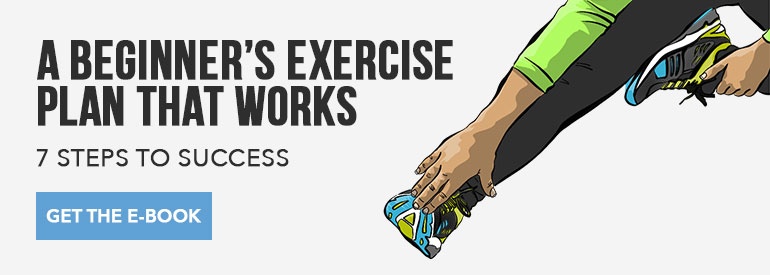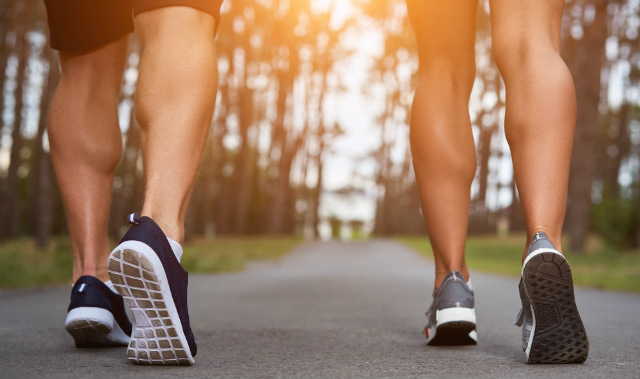 Reading Time: 6 minutes
Reading Time: 6 minutesMan has spent centuries on packaging the world into a neat space with a roof, lights, and climate control. Because of this, we tell ourselves that we are advanced, evolved beings.
But we’ve got it wrong.
The modern fitness world has spent billions of dollars developing machines (and advertising them to you) in order to keep you fit and healthy.
But they’ve got it wrong, too.
Walking is the single most beneficial thing you can do for yourself after going to bed earlier and eating better.
Consider the following:
- A twelve-year study by Hakim et al. found that men who walked less than a mile per day died at a rate double that of those who walked at least two miles per day.
- A 2015 study by Zhao et al. found that for men without critical diseases found that walking over two hours per day was significantly associated with lower all-cause mortality. For men with critical diseases, walking one to two hours per day showed a protective effect on mortality compared with walking less than half an hour per day.
- A ten-year study published in 2015 by Dwyer et al. showed that increasing your step count to 10,000 steps per day (for me this amounts to roughly 5km of walking plus my normal back and forth in the gym) lowered risk of death by 46%.
In addition, a nearly ten-year study by Williams and Thompson published in 2013 found some amazing things relating to walking:
- People who walked slower than 24.19 minutes-per-mile (equivalent to covering 400m during a six-minute walk test) showed the highest risk of death from cardiovascular disease, heart failure, and dementia.
- The risk of dementia increased 6.6% with every extra minute per mile. That is to say, the slower you walk the more likely you are to develop dementia. During their test, researchers found the slowest walkers had a nearly three times more likely chance of developing dementia than the fastest walkers.
- A slower minute-per-mile pace led to a 2.4% greater chance of cardiovascular disease, a 2.8% increase in risk for ischemic heart disease, a 6.5% greater risk for heart disease, and a 6.2% increased risk for hypertensive heart disease.
The Link Between Walking and Vitamin D
If you’re not sold on walking yet there’s another factor to consider. Vitamin D is an important hormone in our health. Low levels of Vitamin D can lead to:
- Depression
- Increased risk of bone fractures and osteoporosis
- Muscle aches and weakness
- Periodontitis (bone weakness relating to tooth loss)
- Birth defects
Vitamin D deficiency has also been found to be highly associated with obesity. That also means it can be a precursor to diseases that stem from obesity such as diabetes, hypertension, and heart disease.
Do you know what the number one source of Vitamin D is? It’s the sun.
This is one of those things where modern gyms have almost got things right, but then failed right when it counts. They provide a way for you to increase your walking daily by having treadmills available but those treadmills are inside and under a bunch of fluorescent lights that don’t help you get any vitamin D.
While I understand that sometimes a treadmill is useful — like if it’s cold, dark, snowing, or possibly unsafe to walk the streets — then it’s a great way to add some walking to your day. However, if it’s not cold, dark, snowing, or unsafe, then it’s probably best to walk outside so we can maximize the benefits and absorb as much vitamin D as possible.
The Science of Walking and Stress Relief
The benefits of walking don’t end at Vitamin D and mortality rates. On a short-term basis, walking can help to counter regular daily stress. And when paired with sleep, walking becomes a powerful one-two punch to allow you to turbo charge your recovery.
How can adding more movement to your day help, you ask? Surely everything has a recovery cost? In most cases that is true. Loaded walking, such as farmer walks or rucking, definitely has a recovery cost. However, unloaded walking has a recovery benefit. This kind of walking is like moving meditation when it comes to lowering stress hormones in the body and gently coaxing us back to a more recovered state.
For instance, a 2007 study by Morita et al. out of Japan found that walking in nature led to a decrease in stress response and emotions. They measured heart rate variability (HRV), blood pressure, pulse, and cortisol as well as subjective measurements of comfort, calm, and relaxation. They found a significant shift in HRV towards the relaxing (parasympathetic) side of the nervous system. Said simply: walking calmed the nervous system. In a world filled with stress, instant messaging, and lack of sleep, walking definitively calmed the body down.
This was backed up with a 2017 study by Di Blasio et al. that found that post-menopausal women experienced a significant lowering of cortisol provided they walked daily. Those who walked sporadically did not see any significant reduction.
But we’re still not done with walking…
Walking Improves Body Composition
One of the things I always do is benchmark. I make a practice of noticing what the most successful people do and emulate it. When it comes to being lean and muscular, bodybuilders have it right. Forget the excessive drug use and being as big as a house. At its core, bodybuilding is about having a lean and muscular physique — something I am sure many would want.
If you ever spend time with a bodybuilder, you will notice one thing when it comes to their cutting phase — there is never any high-intensity interval work. None. Zero Zip. Zilch. Nada. The reason is simple — it is too costly and can result in decreased muscle mass. Bodybuilders have intuitively grasped the elements of recovery necessary for muscle growth and, in an effort to always optimize that growth, they spend the rest of their time doing the minimum they can to get the best result. And that result comes from low impact, easy effort cardio.
In other words, they will go for a slow walk.
If you’re a 200lb (90kg) male, then you’ll burn roughly 400cal/hour walking. That may not sound like much, and in relation to many other activities like running (~700-1000cal/hour) it isn’t. However, remember that walking lowers stress, allows you to absorb vitamin D, and helps you live longer — so maybe all exercise isn’t about the calorie count.
But even with all that taken into consideration, if you walk for an hour a day you’ll burn 2800 cal/week (400 calories x 7 days). One kilogram of fat has 9,000 calories. That means an hour of walking a day will help shave one kilogram (2.2 pounds) off your waistline over a three-week period. That amounts to 17lb or 8kg over the course of a year — and all with no actual food restriction to achieve it. Who wouldn’t like to lose that much fat over the next twelve months?
Note: a more likely scenario for hard-training individuals is that if you haven’t got your food nailed down correctly it’s likely you’re going to over-fuel slightly. Therefore, having the 400-cal/day buffer from walking to take care of any accidental overeating might be extremely useful.
Make It a Year of Walking
If you haven’t figured it out yet, I am a huge fan of walking. There are just too many benefits to ignore. If you want to make this year your healthiest year ever, you need to start with a foundation of health first. Sleep, wholesome food choices, and walking are the cornerstones of building enormous fitness potential. With so many benefits you really have no reason not to lace up and get outside more often.









